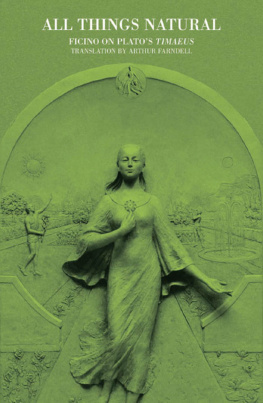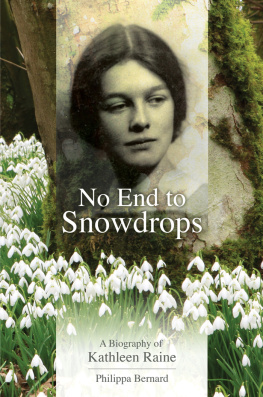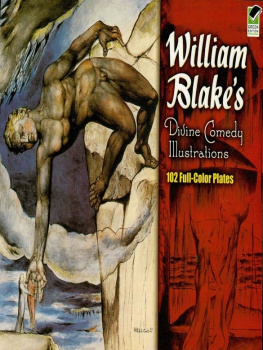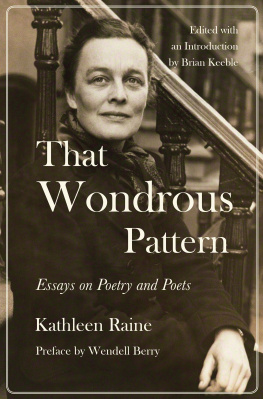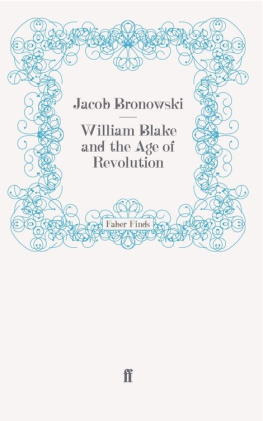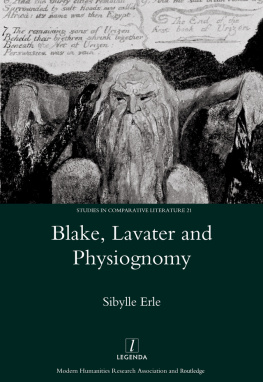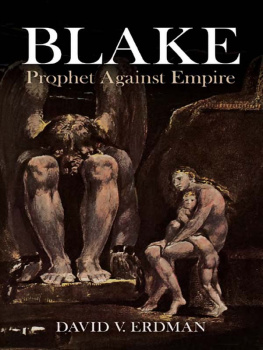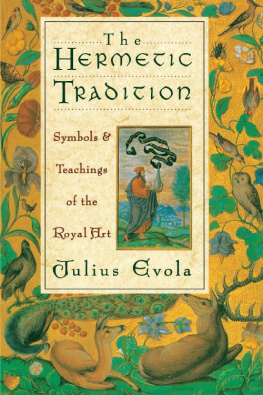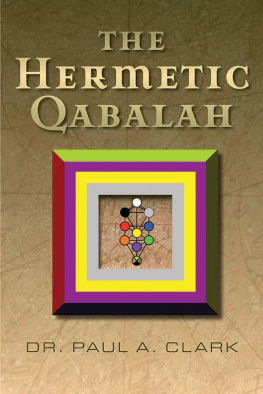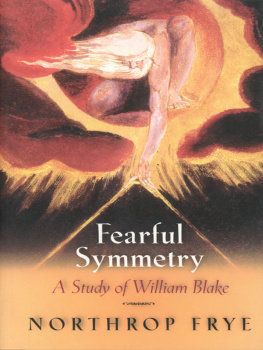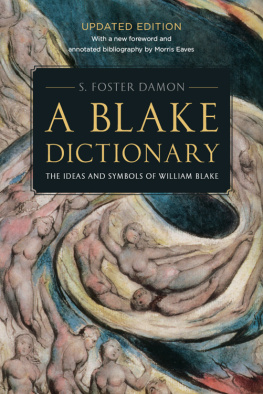IN THE COURSE of the many years over which I have been working on Blakes sources I have received help, courtesy, and encouragement from many persons and more than one organization. When the work was begun it was with no thought that it would ever form part of so distinguished a series as the A. W. Mellon Lectures in the Fine Arts, or indeed that it would be given in the form of lectures at all. The present volume is (with additions and amendments) the manuscript as I submitted it for publication to the Bollingen Foundation in 1961; from it, six lectures were extracted to deliver at the National Gallery of Art, at Washington, D.C., in the spring of 1962. For the honor of this invitation I wish to thank Mr. Paul Mellon and the Trustees of the National Gallery.
Next I wish to thank the Bollingen Foundation, whose award of a fellowship for two years, generously extended to three when the work showed no signs of being finished, enabled me to undertake a prolonged and serious study of Blakes sources. When at the end of this time the book was still unwritten, Girton College took back a prodigal, who after half a lifetime as a poet had never thought to be received into a city of learning. I especially thank Professor M. C. Bradbrook, whose idea it was that I should return to my old College, where as a research fellow, and with further help from the Bollingen Foundation, I was able to complete my task. I am a debtor, also, to the London Library and to the Trustees of the British Museum, where for many happy days I read strange books in the North Library.
More specific thanks are due to Blake scholars who have in several ways helped me. First, to Sir Geoffrey Keynes, whose scholarly and beautiful editions and bibliography must be the foundation of all Blake studies. Textual references are to his 1957 Nonesuch variorum edition of Blakes writings. Besides this general indebtedness I have to add my personal thanks for help and counsel. Mr. H. M. Margoliouths edition of Blakes Vala (Oxford, 1956) has been another invaluable text, studied with profit and delight. The beautiful facsimile volumes issued by the Blake Trust have added an element of aesthetic pleasure to hard work; and here I must thank Mr. Kerrison Preston, not only for much help, advice, and criticism, but for lending for reproduction two colored plates from Jerusalem here reproduced for the first time. Mrs. W. B. Yeats has kindly allowed me to copy and quote marginalia from Yeatss Blake library, and also to quote passages from Yeatss published works; for these and other marks of kindness, I wish to thank her.
Dr. J. Bronowski kindly read several long sections of my work in progress, early friendship outweighing a difference in point of view. To Dr. Philip Sherrard I am indebted also for reading my manuscript, for making me rewrite a great deal of it, and for holding me to traditional orthodoxy. Mr. John Holloway also read my manuscript; and Mr. Marco Pallis I also have to thank for instruction in traditional doctrine. Dr. F. A. C. Wilson helped me with the task of correcting and checking; Mr. Francis Warner gave me similar help at a later stage.
I am grateful also to Mr. Martin Bell and to Mr. John Heath Stubbs for recondite and relevant pieces of information both were kind enough (knowing I was engaged on this work) to volunteer; to Dr. R. J. Zwi Werblowsky, of Hebrew University, Jerusalem, for information on the cabalistic symbolism of the garden of Eden; and above all to the late Mr. Alan Glover, to whom I owe my thanks for his wonderful patience in the editing of this work for publication, and for his advice on matters of scholarship in so many of the fields covered by this book.
Mr. Ruthven Todd, a distinguished pioneer in Blake scholarship, has made the drawing of Anemone Pulsatilla on p. 105, a mark of friendship. Professor I. A. Richards, Professor Bernard Blackstone, and Mr. T. R. Henn have all in some tangible way helped.
Among those who have helped in ways less tangible I would like especially to thank Sir Herbert Read, and to record my debt to the late Helen Sutherland, in whose house much of my work was done.
More generally, I gladly acknowledge my debt to scholars whose works are listed in the Bibliography.
If one may thank discarnate spirits, there are three above all whose thought has companioned me like a living presence: Blake, of course; W. B. Yeats, whom in life I never saw; and Thomas Taylor, the Platonist, ancestor of my grandchildren.
My thanks to Sir Geoffrey Keynes and the Nonesuch Press for permission to quote from Blake texts; to the Macmillan Company for quotations from Gilchrists life of Blake and from the works of Yeats; and to the Oxford University Press for permission to use the text of H. M. Margoliouths Vala.
Sections of this book have appeared in different form as the following articles:
Who Made the Tyger? Encounter, II, No. 9 (June 1954), 4350.
Tiriel. The Huntington Library Quarterly, Nov. 1957.
Blakes Cupid and Psyche. Listener (Nov. 21, 1957), 83235.
The Little Girl Lost and Found and The Lapsed Soul. Pp. 1763 of The Divine Vision. Ed. V. de S. Pinto. London, 1957.
The Sea of Time and Space. Journal of the Warburg and Courtauld Institutes, XX (1957), 31837.
Blakes Debt to Antiquity. The Sewanee Review, LXXI, No. 3 (Summer 1963), 352450.
The last of these is a somewhat abridged version of the lectures I gave in 1962. Condensed versions of one or two other chapters have been broadcast on the B.B.C.s Third Programme. All have been revised, some very extensively, since they first appeared.
K. R.
October 1964
QUOTATIONS from Blakes writings, except for certain of those from The Four Zoas are taken from The Complete Writings of William Blake, ed. Geoffrey Keynes (London: Nonesuch Press, and New York: Random House, 1957). References are indicated by number of plate (in the case of an engraved poem), book, or part (when the poem is so divided), and the letter K, followed by Keyness page and line numbers. When The Four Zoas is quoted or cited in the edition of H. M. Margoliouth (Blakes Vala, London: Oxford University Press, 1956), the title Vala is used, followed by the recto or verso numbering; line and page references to Keynes are also given for these citations. For Blakes Notebook (the Rossetti Manuscript) references are to the manuscript pages as given by Keynes.
For the convenience of scholars I have used the same abbreviations for the titles of Blakes works as Northrop Fryes in Fearful Symmetry (Princeton University Press, 1947):
| A.R.O. | All Religions Are One |
| B.A. | The Book of Ahania |
| B.L. | The Book of Los |
| B.T. | The Book of Thel |
| B.U. | The Book of Urizen |
| D.C. | A Descriptive Catalogue |
| E.G. | The Everlasting Gospel |
| F.R. | The French Revolution |
| F.Z. | The Four Zoas |
| G.P. | The Gates of Paradise |
| I.M. | An Island in the Moon |
| J. | Jerusalem |
| M. | Milton |
| M.H.H. | The Marriage of Heaven and Hell |
| N.N.R. | There is No Natural Religion |
| P.A. | Public Address (Notebook) |
| P.S. | Poetical Sketches |
| S.E. | Songs of Experience |
| S.I. | Songs of Innocence |
| S.L. | The Song of Los |


